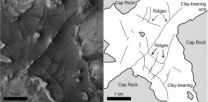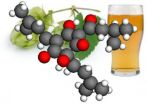(Press-News.org) PHILADELPHIA – HIV patients who participated in an intervention that helped them identify barriers to taking their drugs properly and develop customized coping strategies took a significantly greater amount of their prescribed doses than those receiving standard care, according to a new study from researchers in the Perelman School of Medicine at the University of Pennsylvania. The results, published this week in JAMA Internal Medicine, may point to a new strategy to improve adherence to medications for many other conditions.
"Nonadherence to medical therapy is a silent epidemic that undercuts physicians' efforts to treat diseases from high cholesterol and hypertension to HIV and diabetes," says the new study's lead author, Robert Gross, MD, MSCE, an associate professor of Infectious Diseases and Epidemiology. "We tend to view the problem as either a failure on our part or on the patient's part, but the results of our new study show that we can do our jobs better by sharing the planning role with them to overcome possible stumbling blocks to taking their prescribed drugs."
Antiretroviral drugs have turned HIV/AIDS into a manageable, chronic condition for many patients who would have died of the disease before the development of these medications, but they require lifelong adherence to be effective. The drugs have short half lives and need to be in the patients' system at all time in order to keep the virus from replicating, so frequently missing doses drastically cuts the chances that treatment will be successful. Predicting which patients will adhere to therapy has proven difficult.
"The barriers to taking these drugs properly are not universal – for some patients, substance abuse or depression might undercut efforts to stay on track, and for others, the complexity of the dosing regimen may pose a problem. Side effects – both real and perceived – can impact adherence, and psychosocial issues like low health literacy or a chaotic lifestyle can interfere, too," Gross says. "We know from previous research that these issues cannot be overcome by simple education or simple technology alone, and financial incentives typically don't produce a sustained effect."
The researchers studied 180 patients receiving care at three Philadelphia HIV clinics, who were divided into two groups, one of which was randomized to a Managed Problem Solving (MAPS) group, and the other to usual care, which included a meeting with a pharmacist for drug regimen education and the provision of pill organizers. In order to study the benefit of the intervention, only patients who had detectable viral loads were enrolled.
With the help of a trained lay interventionist, MAPS participants received education about their newly prescribed drug regimen and then were taken through a process for identifying their personal barriers to adherence, brainstorming potential solutions, selecting the best option and monitoring its implementation. Potential solutions included memory and cognitive aids to remember to take and refill the drugs, ways to use social supports, and resources to seek help for depression or drug side effects. These plans were made during four initial in-person sessions and 12 telephone meetings that provided help for solving new problems and offering encouragement for obtaining refills and maintaining their regimens. Both groups' adherence to their drug regimen was recorded through the use of an electronically monitored pill bottle.
The results showed that the MAPS group was nearly twice (1.78 times) as likely as the usual care group to be at the better end of the adherence scale. Importantly, the researchers showed that this improvement in adherence translated to improvement in a key marker of survival. The MAPS group also had a 50 percent improvement in their viral suppression rate – having no detectable HIV virus in the blood while on treatment. Although the findings showed that patients who had previously taken and failed antiretroviral regimens were only half as likely to be in the better adherence categories and have virologic suppression than those new to therapy, they were equally likely to benefit from the MAPS intervention. Gross notes that for every 25 percent increase in antiretroviral drug doses taken, a patient's chance of having treatment success was doubled in the study.
Patients whose viral loads are suppressed are at much less risk of transmitting HIV to others in the community, so efforts to improve adherence stand to benefit the population at large.
"Importantly, we found that this intervention was equally effective for both patients who were just beginning therapy and those who had already been taking the drugs and had problems adhering, and it continued to be effective over time, unlike many approaches in which patients eventually fall into less adherent behavior," Gross says. "The effect we found also persisted even though the population we studied has many life challenges, including poverty and unemployment."
He and his colleagues suggest that the same approach could be utilized to improve treatment adherence for patients with Hepatitis C, heart failure, and other diseases, particularly if the MAPS process could be scaled back to require less interaction with interventionist, and if patients who may require "booster" sessions could be identified. The authors have made their Managed Problem Solving treatment manual available online for use by other clinicians, at http://www.med.upenn.edu/cceb/maps-form.shtml.
###Penn Medicine is one of the world's leading academic medical centers, dedicated to the related missions of medical education, biomedical research, and excellence in patient care. Penn Medicine consists of the Raymond and Ruth Perelman School of Medicine at the University of Pennsylvania (founded in 1765 as the nation's first medical school) and the University of Pennsylvania Health System, which together form a $4.3 billion enterprise.
The Perelman School of Medicine is currently ranked #2 in U.S. News & World Report's survey of research-oriented medical schools. The School is consistently among the nation's top recipients of funding from the National Institutes of Health, with $479.3 million awarded in the 2011 fiscal year.
The University of Pennsylvania Health System's patient care facilities include: The Hospital of the University of Pennsylvania -- recognized as one of the nation's top "Honor Roll" hospitals by U.S. News & World Report; Penn Presbyterian Medical Center; and Pennsylvania Hospital — the nation's first hospital, founded in 1751. Penn Medicine also includes additional patient care facilities and services throughout the Philadelphia region.
Penn Medicine is committed to improving lives and health through a variety of community-based programs and activities. In fiscal year 2011, Penn Medicine provided $854 million to benefit our community.
Personalized plans to address barriers to HIV drug adherence boost chances of successful therapy
Patient-directed problem-solving approach improves proper dosing, cuts viral load
2013-01-29
ELSE PRESS RELEASES FROM THIS DATE:
Cultural evolution changes bird song
2013-01-29
Thanks to cultural evolution, male Savannah sparrows are changing their tune, partly to attract "the ladies."
According to a study of more than 30 years of Savannah sparrows recordings, the birds are singing distinctly different songs today than their ancestors did 30 years ago – changes passed along generation to generation, according to a new study by University of Guelph researchers.
Integrative biology professors Ryan Norris and Amy Newman, in collaboration with researchers at Bowdoin College and Williams College in the U.S., analyzed the songs of male Savannah ...
'Moral realism' may lead to better moral behavior
2013-01-29
CHESTNUT HILL, Mass. — Getting people to think about morality as a matter of objective facts rather than subjective preferences may lead to improved moral behavior, Boston College researchers report in the Journal of Experimental Social Psychology.
In two experiments, one conducted in-person and the other online, participants were primed to consider a belief in either moral realism (the notion that morals are like facts) or moral antirealism (the belief that morals reflect people's preferences) during a solicitation for a charitable donation. In both experiments, those ...
New American Chemical Society podcast: Boosting the sensitivity of airport security screening
2013-01-29
The latest episode in the American Chemical Society's (ACS') award-winning Global Challenges/Chemistry Solutions podcast series reports a simple way to improve the sensitivity of the test often used to detect traces of explosives on the hands, carry-ons and other possessions of passengers at airport security screening stations.
Based on a report by Yehuda Zeiri, Ph.D., and colleagues in ACS' The Journal of Physical Chemistry C, the new podcast is available without charge at iTunes and from www.acs.org/globalchallenges.
In the new episode, Zeiri explains that most ...
NSF-funded team samples Antarctic lake beneath the ice sheet
2013-01-29
In a first-of-its-kind feat of science and engineering, a National Science Foundation (NSF)-funded research team has successfully drilled through 800 meters (2,600 feet) of Antarctic ice to reach a subglacial lake and retrieve water and sediment samples that have been isolated from direct contact with the atmosphere for many thousands of years.
Scientists and drillers with the interdisciplinary Whillans Ice Stream Subglacial Access Research Drilling project (WISSARD) announced Jan. 28 local time (U.S. stations in Antarctica keep New Zealand time) that they had used a ...
Fossilized conduits suggest water flowed beneath Martian Surface
2013-01-29
PROVIDENCE, R.I. [Brown University] — Networks of narrow ridges found in impact craters on Mars appear to be the fossilized remnants of underground cracks through which water once flowed, according to a new analysis by researchers from Brown University.
The study, in press in the journal Geophysical Research Letters, bolsters the idea that the subsurface environment on Mars once had an active hydrology and could be a good place to search for evidence of past life. The research was conducted by Lee Saper, a recent Brown graduate, with Jack Mustard, professor of geological ...
Researchers find gene that turns up effect of chemotherapy
2013-01-29
Chemotherapy is one of the most common treatments for cancer patients. However, many patients suffer from serious side-effects and a large proportion does not respond to the treatment. Researchers from the Biotech Research and Innovation Centre (BRIC) and Center for Healthy Aging, University of Copenhagen, now show that the gene FBH1 helps turn up the effect of chemotherapy.
"Our results show that the gene FBH1 is crucial in order for some chemotherapeutics to become active in the body and kill the cancer cells. If we can find a feasible method to increase the activity ...
Hydrogen sulfide: The next anti-aging agent?
2013-01-29
Hydrogen sulfide (H2S) may play a wide-ranging role in staving off aging, according to a paper published online ahead of print in the journal Molecular and Cellular Biology. In this review article, a team from China explores the compound's plethora of potential anti-aging pathways.
"H2S has been gaining increasing attention as an important endogenous signaling molecule because of its significant effects on the cardiovascular and nervous systems," the team writes. The evidence is mounting, they note, that hydrogen sulfide slows aging by inhibiting free-radical reactions, ...
New OHSU research helps explain early-onset puberty in females
2013-01-29
BEAVERTON, Ore. - New research from Oregon Health & Science University has provided significant insight into the reasons why early-onset puberty occurs in females. The research, which was conducted at OHSU's Oregon National Primate Research Center, is published in the current early online edition of the journal Nature Neuroscience.
The paper explains how OHSU scientists are investigating the role of epigenetics in the control of puberty. Epigenetics refers to changes in gene activity linked to external factors that do not involve changes to the genetic code itself. The ...
Tomorrow's life-saving medications may currently be living at the bottom of the sea
2013-01-29
PORTLAND, Ore. – OHSU researchers, in partnership with scientists from several other institutions, have published two new research papers that signal how the next class of powerful medications may currently reside at the bottom of the ocean. In both cases, the researchers were focused on ocean-based mollusks – a category of animal that includes snails, clams and squid and their bacterial companions.
Sea life studies aid researchers in several ways, including the development of new medications and biofuels. Because many of these ocean animal species have existed in ...
Beer's bitter compounds could help brew new medicines
2013-01-29
Researchers employing a century-old observational technique have determined the precise configuration of humulones, substances derived from hops that give beer its distinctive flavor.
That might not sound like a big deal to the average brewmaster, but the findings overturn results reported in scientific literature in the last 40 years and could lead to new pharmaceuticals to treat diabetes, some types of cancer and other maladies.
"Now that we have the right results, what happens to the bitter hops in the beer-brewing process makes a lot more sense," said Werner ...
LAST 30 PRESS RELEASES:
Norbert Holtkamp appointed director of Fermi National Accelerator Laboratory
New agentic AI platform accelerates advanced optics design
Biologists discover neurons use physical signals — not electricity — to stabilize communication
Researchers discover that a hormone can access the brain by hitchhiking
University of Oklahoma researcher awarded funding to pursue AI-powered material design
Exploring how the visual system recovers following injury
Support for parents with infants at pediatric check-ups leads to better reading and math skills in elementary school
Kids’ behavioral health is a growing share of family health costs
Day & night: Cancer disrupts the brain’s natural rhythm
COVID-19 vaccination significantly reduces risk to pregnant women and baby
The role of vaccination in maternal and perinatal outcomes associated with COVID-19 in pregnancy
Mayo Clinic smartwatch system helps parents shorten and defuse children's severe tantrums early
Behavioral health spending spikes to 40% of all children’s health expenditures, nearly doubling in a decade
Digital cognitive behavioral treatment for generalized anxiety disorder
Expenditures for pediatric behavioral health care over time and estimated family financial burden
Air conditioning in nursing homes and mortality during extreme heat
The Alps to lose a record number of glaciers in the next decade
What makes a good proton conductor?
New science reporting guide published for journalists in Bulgaria
New international study reveals major survival gaps among children with cancer
New science reporting guide published for journalists in Turkey
Scientists develop a smarter mRNA therapy that knows which cells to target
Neuroanatomy-informed brain–machine hybrid intelligence for robust acoustic target detection
Eight SwRI hydrogen projects funded by ENERGYWERX
The Lundquist Institute and its start-up company Vitalex Biosciences Announces Strategic Advancement of Second-Generation fungal Vaccine VXV-01 through Phase 1 Trials under $40 Million Competitive Con
Fine particles in pollution are associated with early signs of autoimmune disease
Review article | Towards a Global Ground-Based Earth Observatory (GGBEO): Leveraging existing systems and networks
Penn and UMich create world’s smallest programmable, autonomous robots
Cleveland researchers launch first major study to address ‘hidden performance killer’ in athletes
To connect across politics, try saying what you oppose
[Press-News.org] Personalized plans to address barriers to HIV drug adherence boost chances of successful therapyPatient-directed problem-solving approach improves proper dosing, cuts viral load




